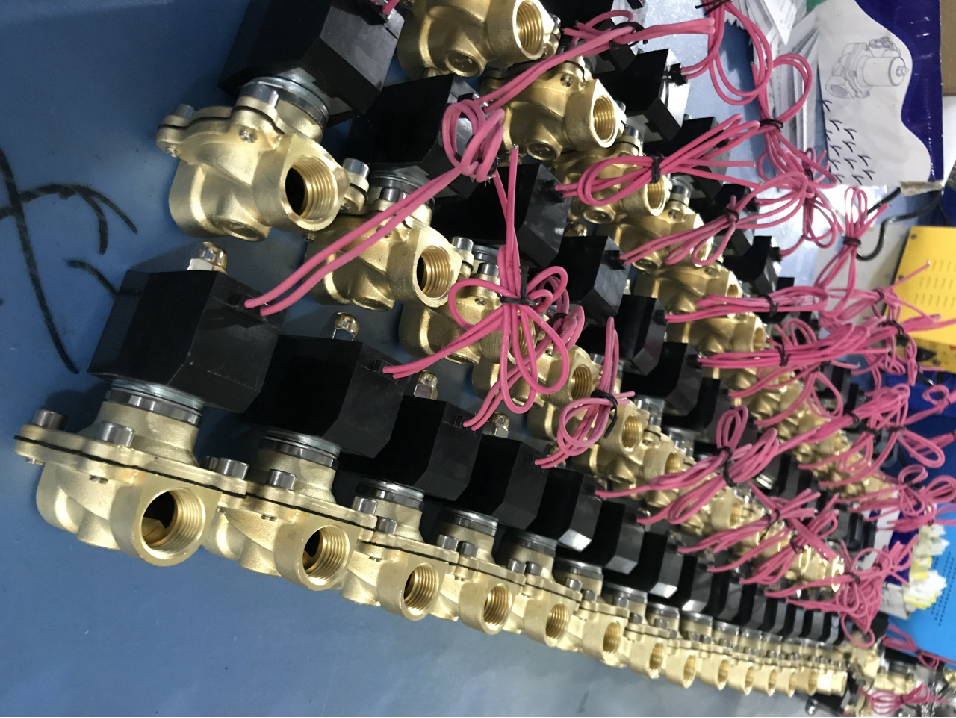
- yueer
- 2025-04-08 10:18:27
Common Solenoid Valve Issues & Solutions: A Quick Troubleshooting Guide
Solenoid valves are essential components in automated systems, but occasional issues may arise. This guide covers common problems, causes, and fixes to help you resolve issues quickly and minimize downtime.
1. Solenoid Valve Fails to Activate
Possible Causes
lNo power or low voltage (e.g., voltage below 24V).
lDamaged coil or broken wiring.
lBlocked valve core (due to debris) or lack of lubrication.
lInsufficient system pressure (some valves require a minimum pressure difference).
Solutions
lCheck power connections and voltage levels.
lTest the coil with a multimeter; replace if damaged.
lDisassemble and clean the valve core; apply high-temperature lubricant.
lAdjust system pressure or switch to a direct-acting solenoid valve for low-pressure systems.
2. Unusual Noises (Buzzing/Humming)
Common Causes
lVoltage fluctuations (common in AC models).
lAir bubbles in the fluid or excessive flow speed.
lLoose internal parts (e.g., worn springs).
Solutions
lUse a DC power supply or install a voltage stabilizer.
lRemove air from the pipeline; install a silencer or flow control valve.
lTighten loose components and replace worn springs.
3. Leakage (External or Internal)
Types & Fixes
lInlet/Outlet Leaks:
Cause: Worn seals, loose installation, or valve body cracks.
→ Replace seals, reinstall the valve, or replace the valve body.
lInternal Leaks (Valve Not Closing Fully):
Cause: Worn valve core, weak spring, or debris blockage.
→ Clean the valve core, replace the spring, or check fluid cleanliness.
4. Overheated or Burnt Coil
Why It Happens
lOvervoltage or short circuit.
lHigh ambient temperature or frequent switching.
Solutions
lEnsure voltage matches the coil rating; replace damaged coils.
lImprove ventilation, reduce switching frequency, or use high-temperature-resistant coils.
5. Slow Response or Unstable Operation
Common Causes
lDebris in the valve or pipeline.
lHigh fluid viscosity or worn springs.
lLong power cables causing voltage drop.
Solutions
lClean the valve and install a filter (20µm recommended).
lReplace springs or select valves designed for high-viscosity fluids.
lShorten cables or use thicker wires for stable power supply.
6. Valve Fails to Stay Open/Closed
Possible Causes
lSeverely worn valve core.
lUnstable control signal (e.g., short pulse duration).
Solutions
lReplace the valve core; check for abrasive particles in the fluid.
lEnsure control signals are stable and meet valve specifications.
7. Issues in Harsh Environments
Extreme Conditions & Fixes
lFreezing Temperatures: Valve core jams → Use anti-freeze valves or add insulation.
lCorrosive Fluids: Valve body/seal damage → Switch to stainless steel valves and corrosion-resistant seals.
lDust/Moisture: Coil short circuits → Choose waterproof/dustproof models (IP65 or higher).
Preventive Maintenance Tips
lRegular Checks: Test valve operation and seals every 3 months.
lClean Fluids: Install a filter (20µm) at the inlet to block debris.
lLubricate Annually: Apply high-temperature grease to the valve core.
lMatch Valve to Application: Select materials based on fluid type (e.g., temperature, corrosiveness).
Pro Tip: For complex issues or if unsure, contact the manufacturer’s support team to avoid further damage!